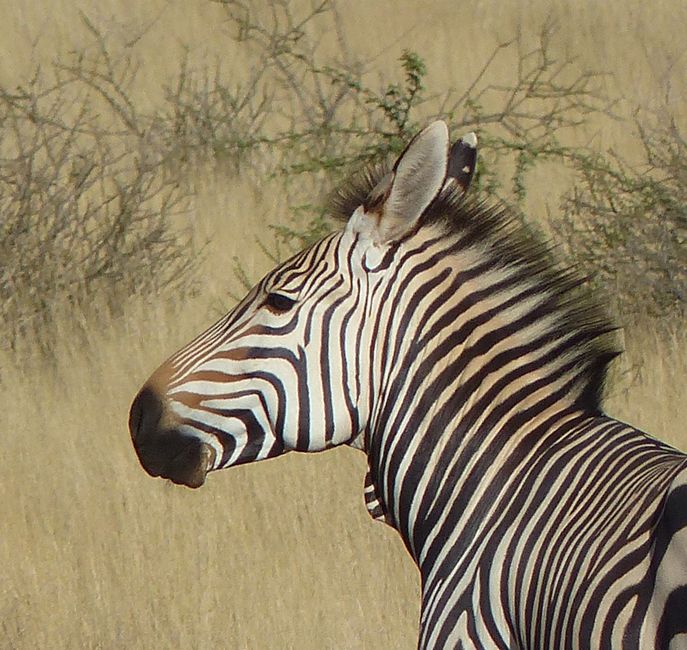On the road again
Publicados: 15.02.2023
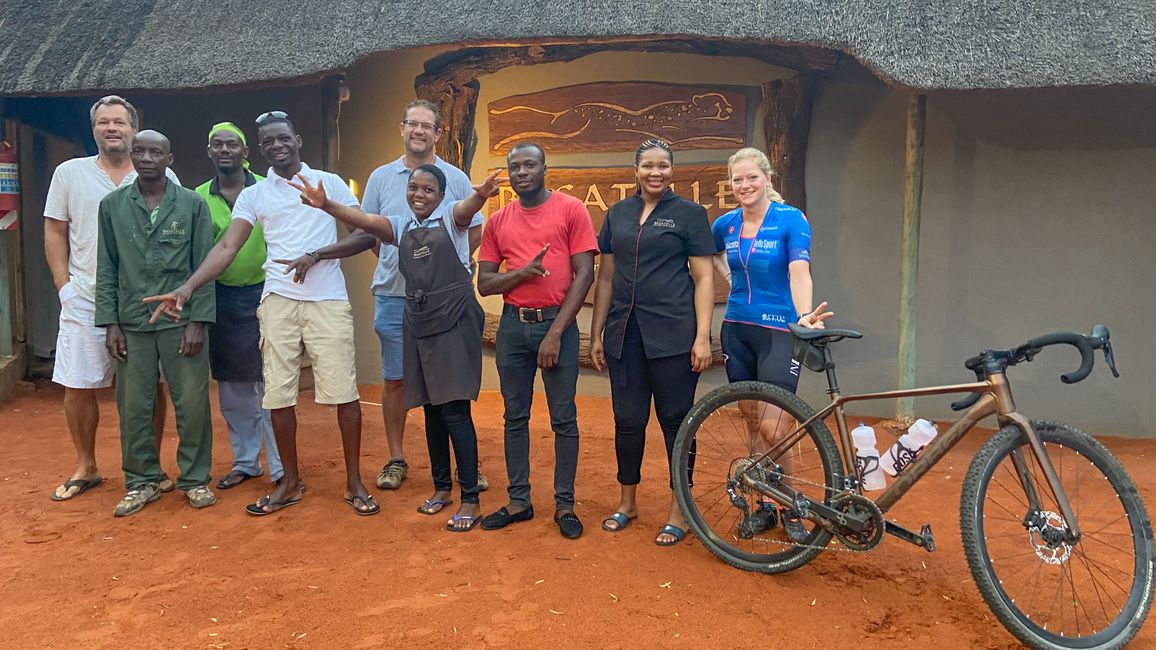
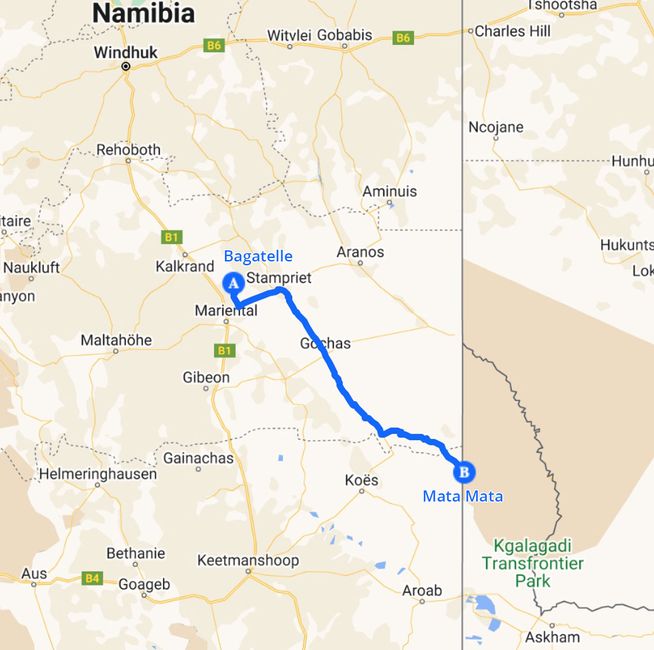
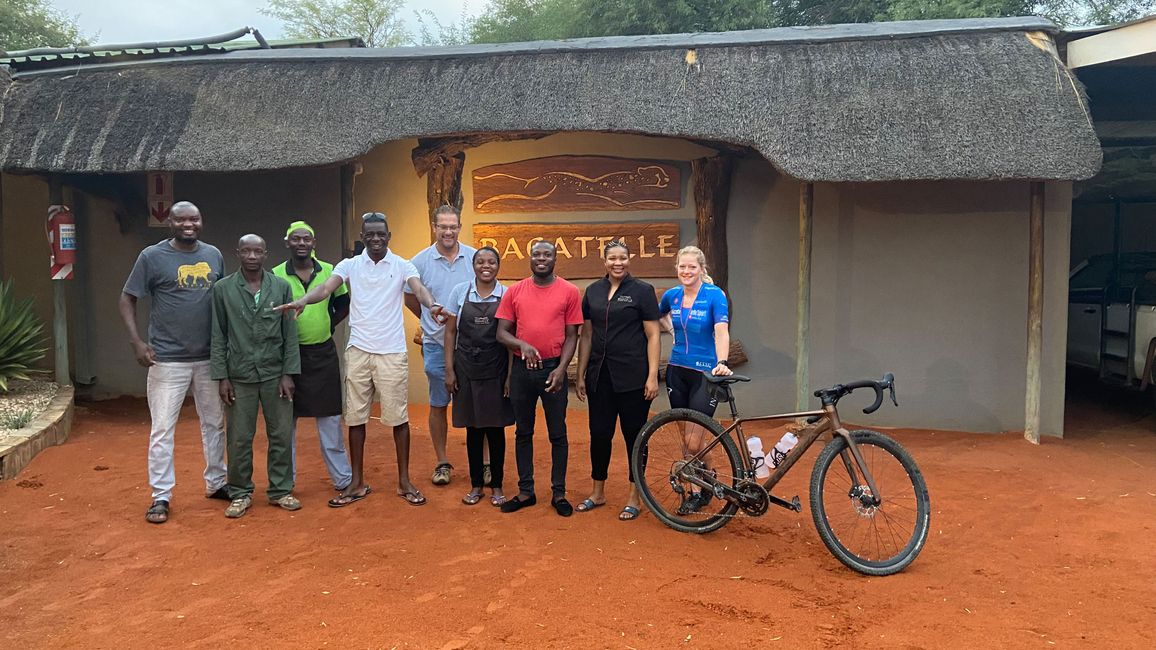
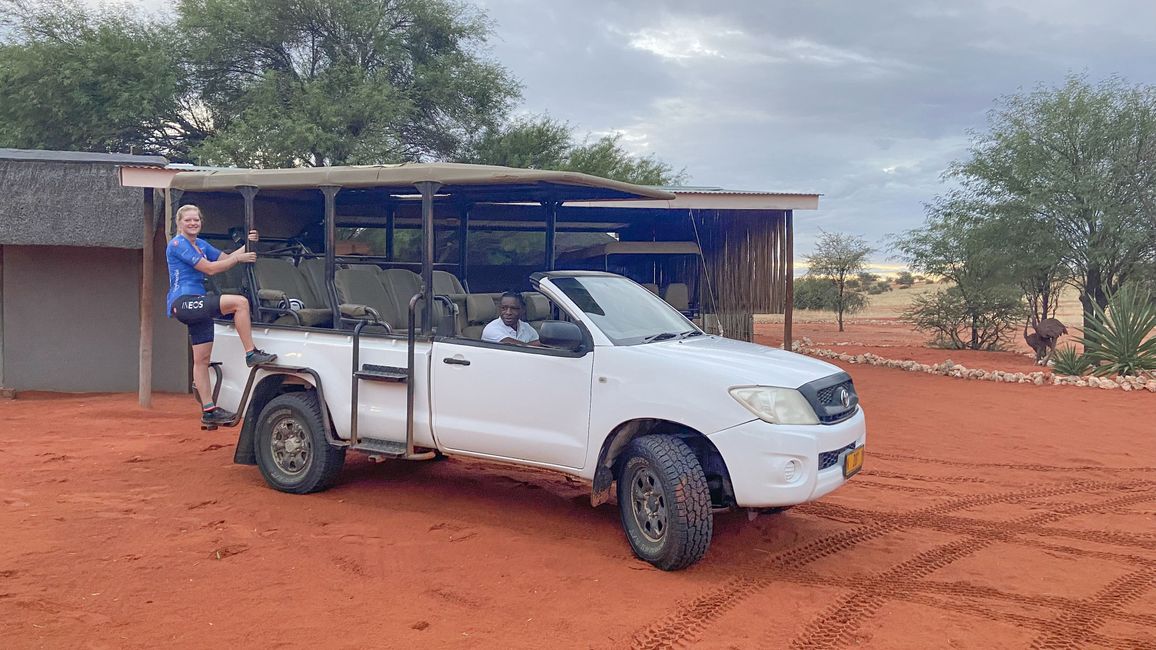
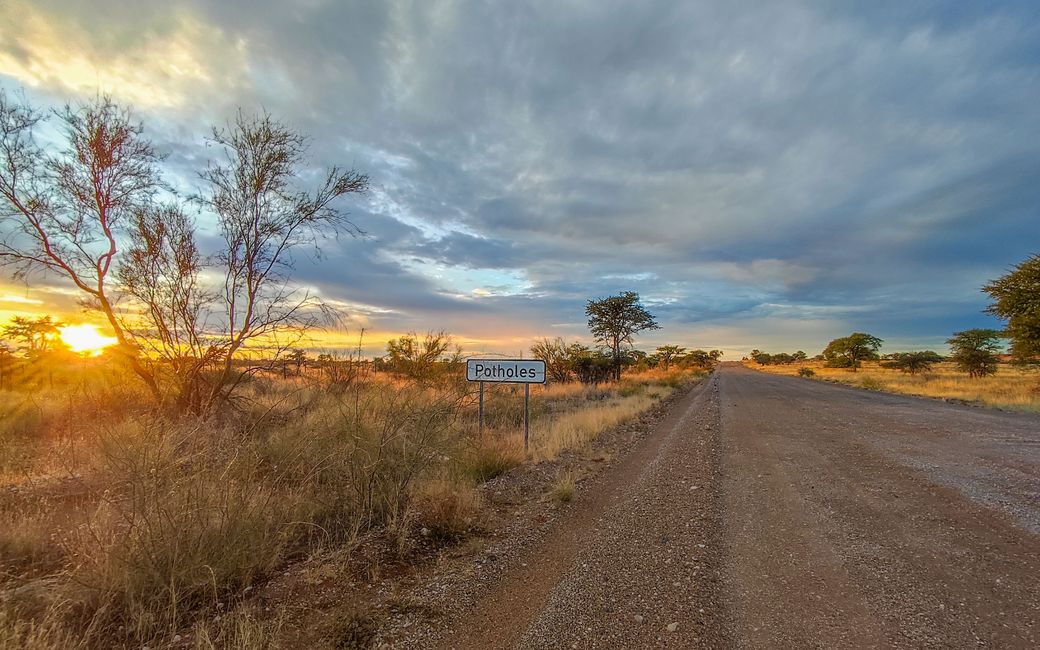
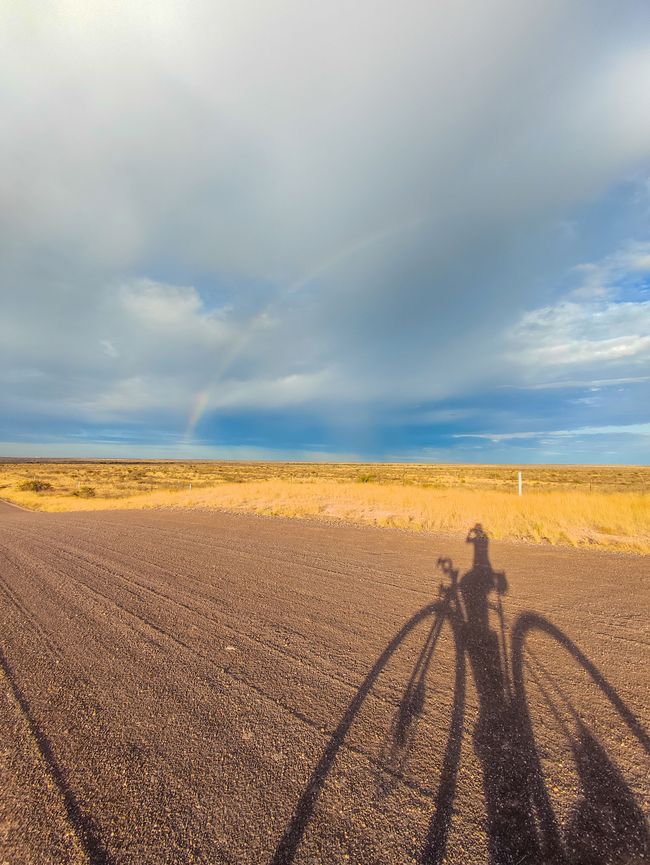
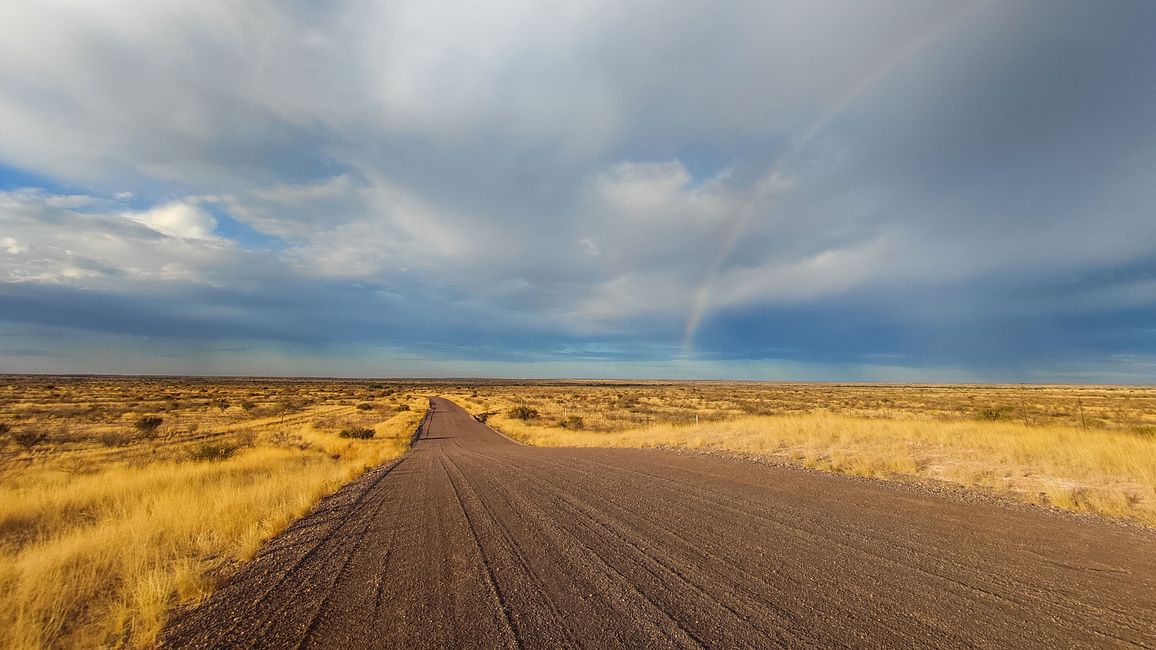
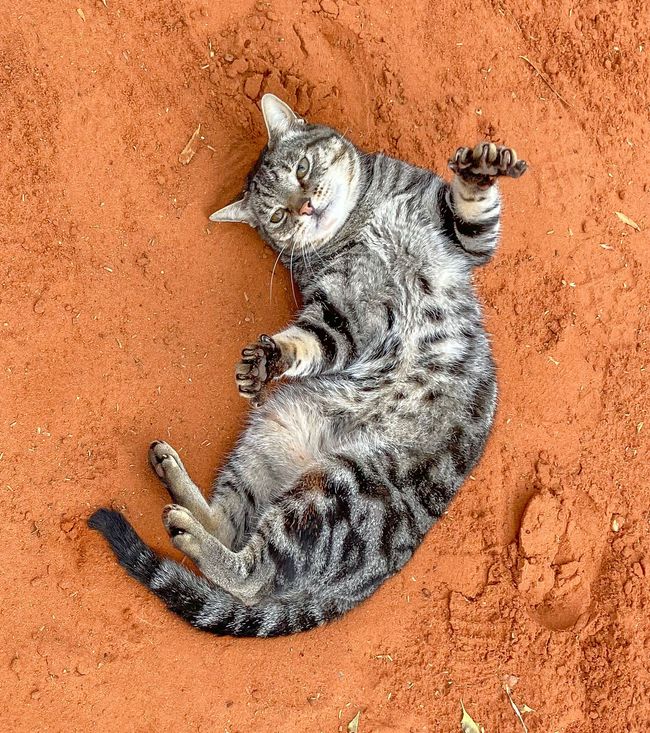
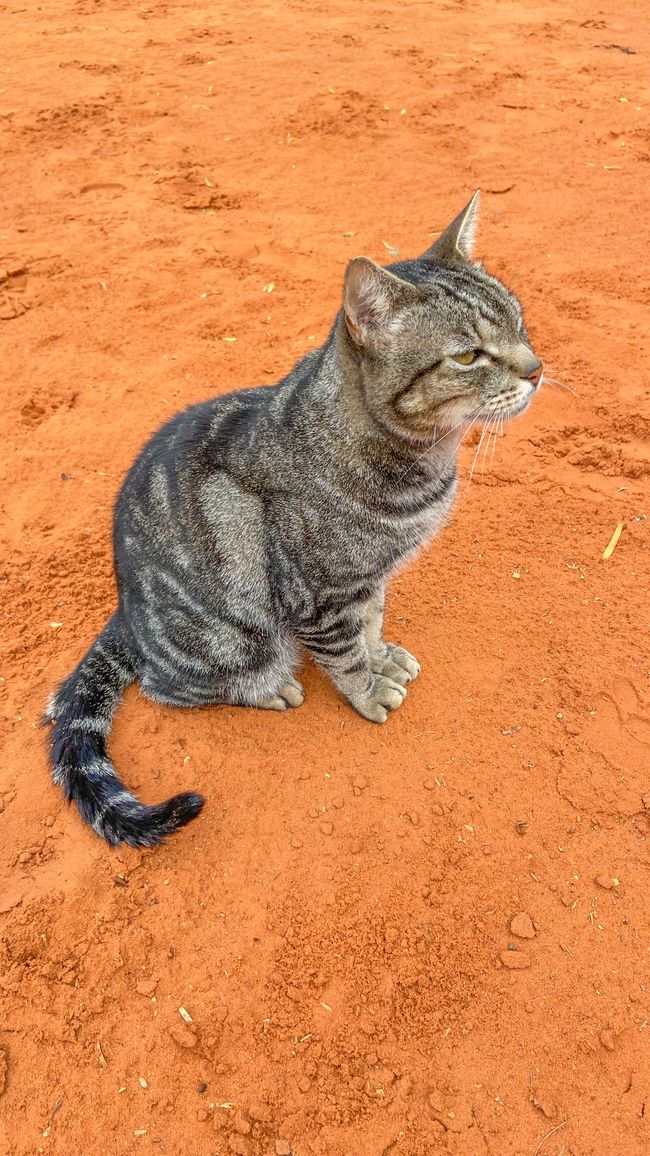
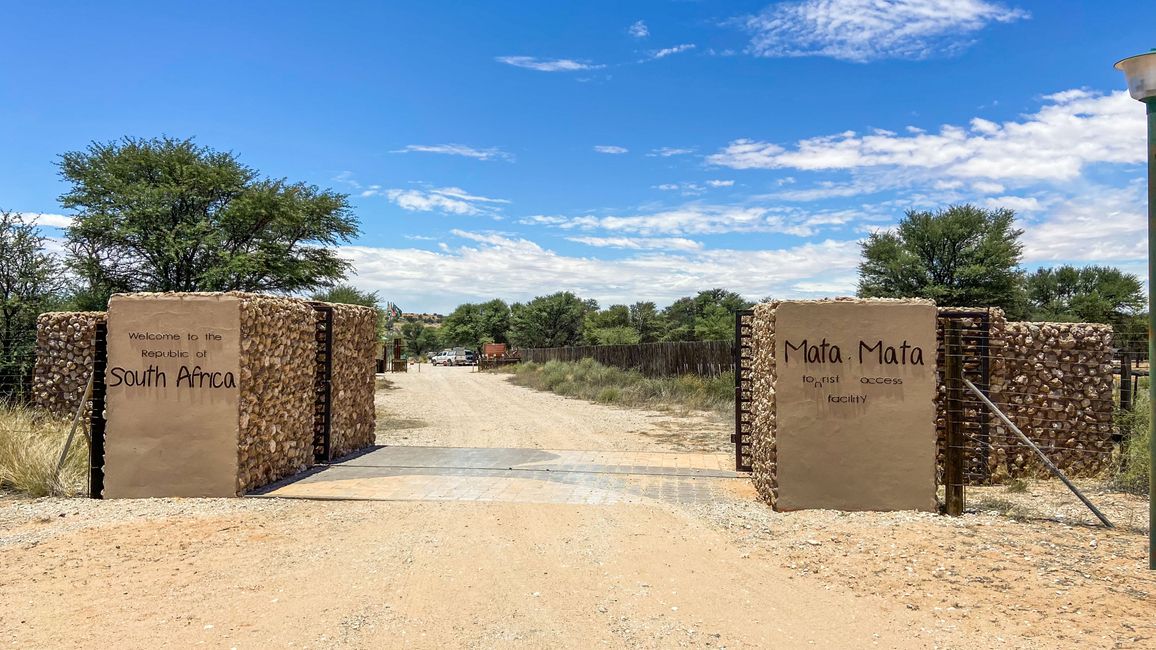
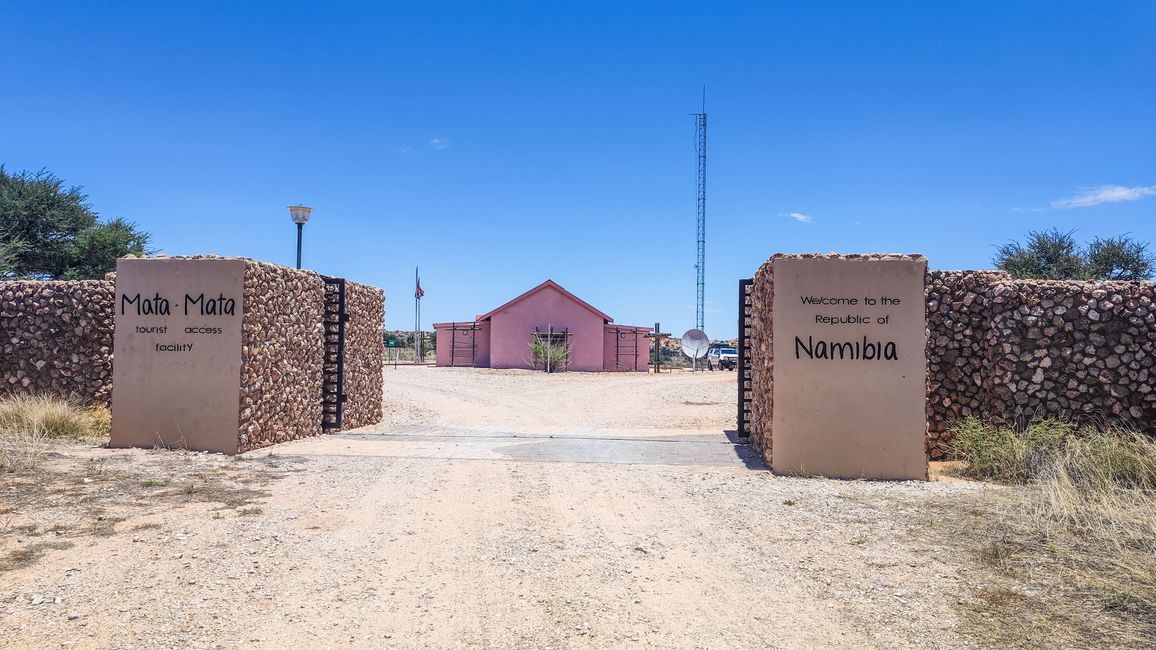
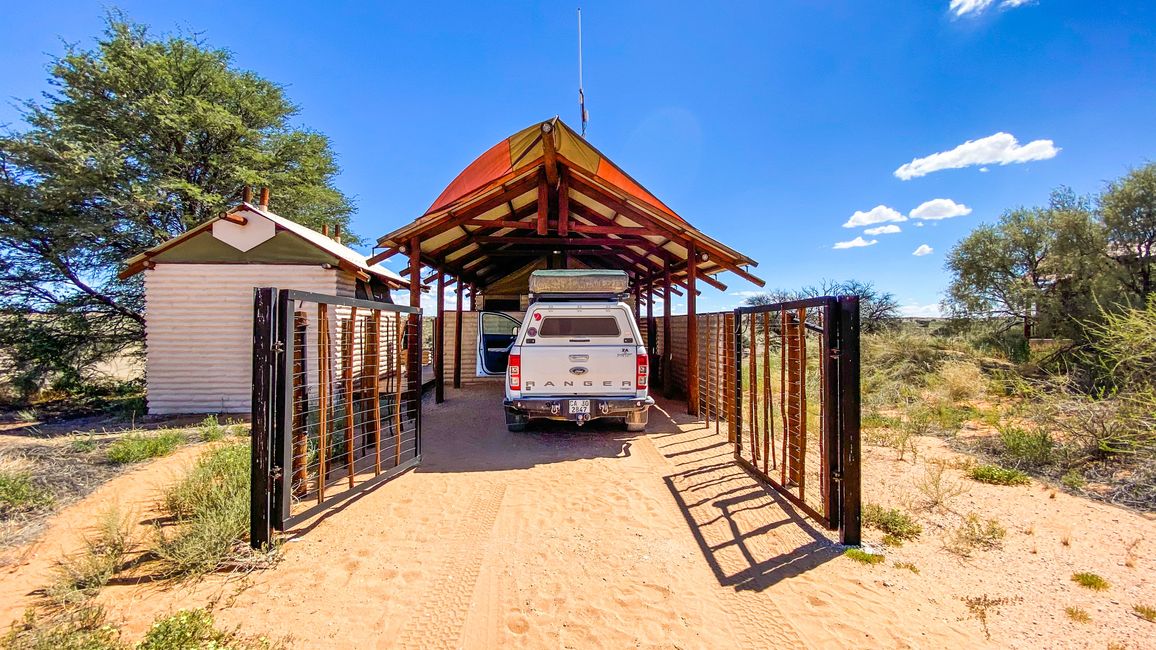
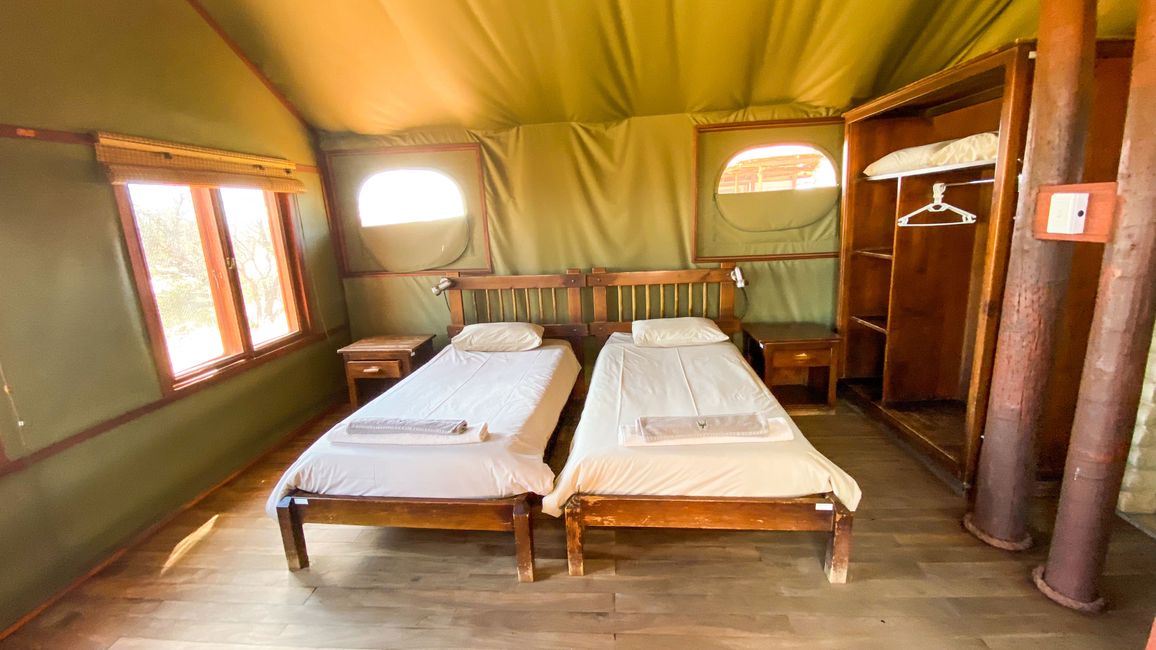
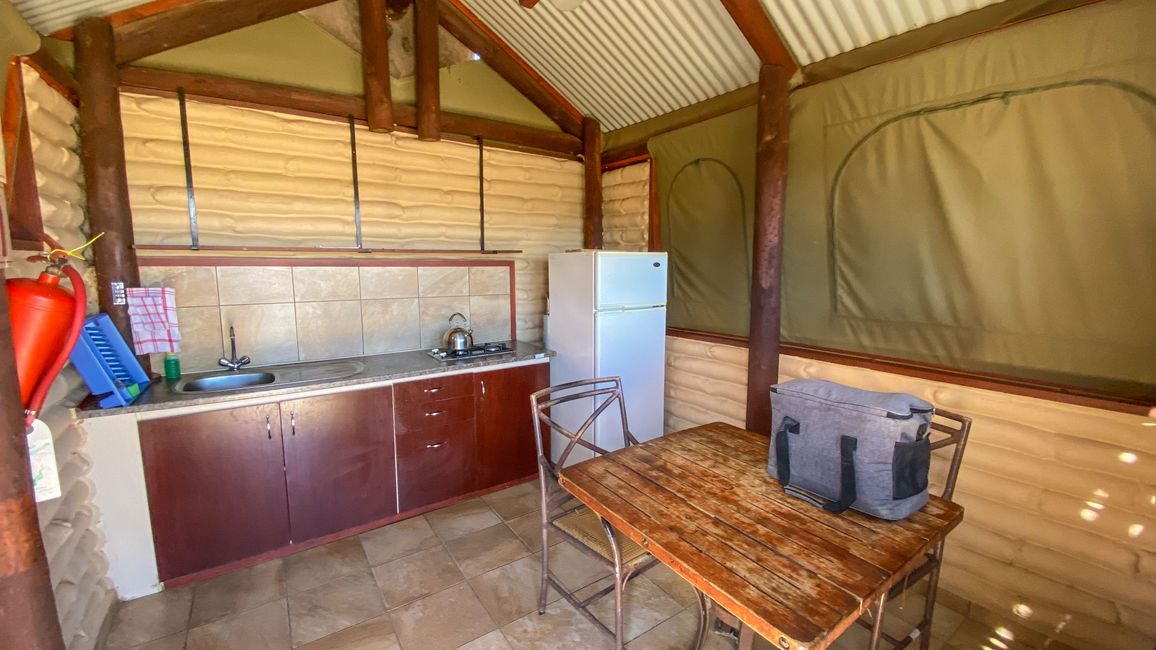
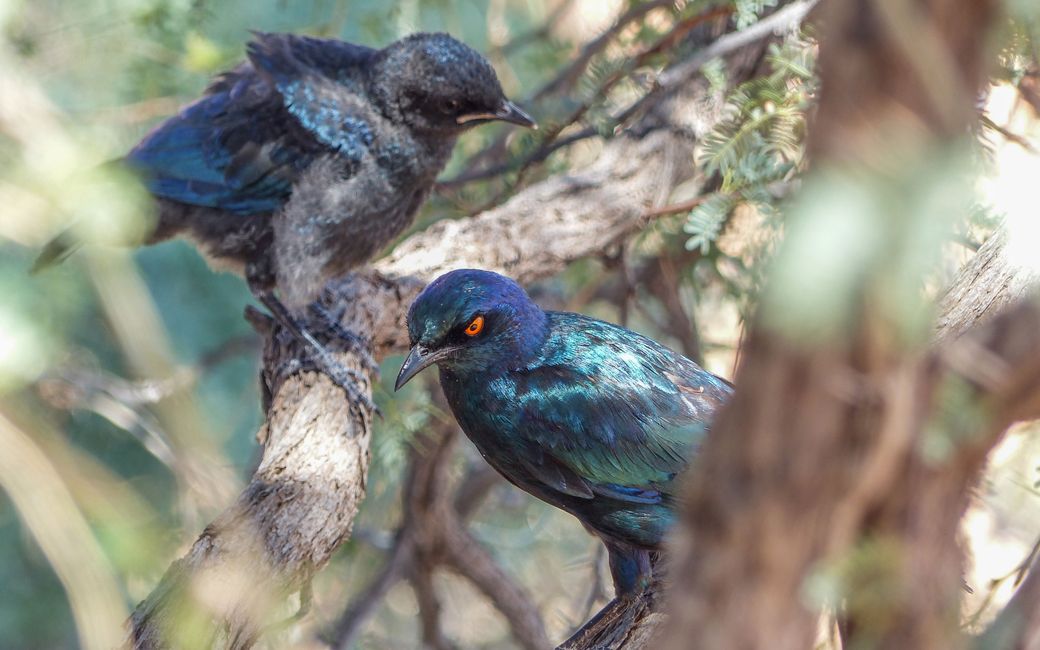
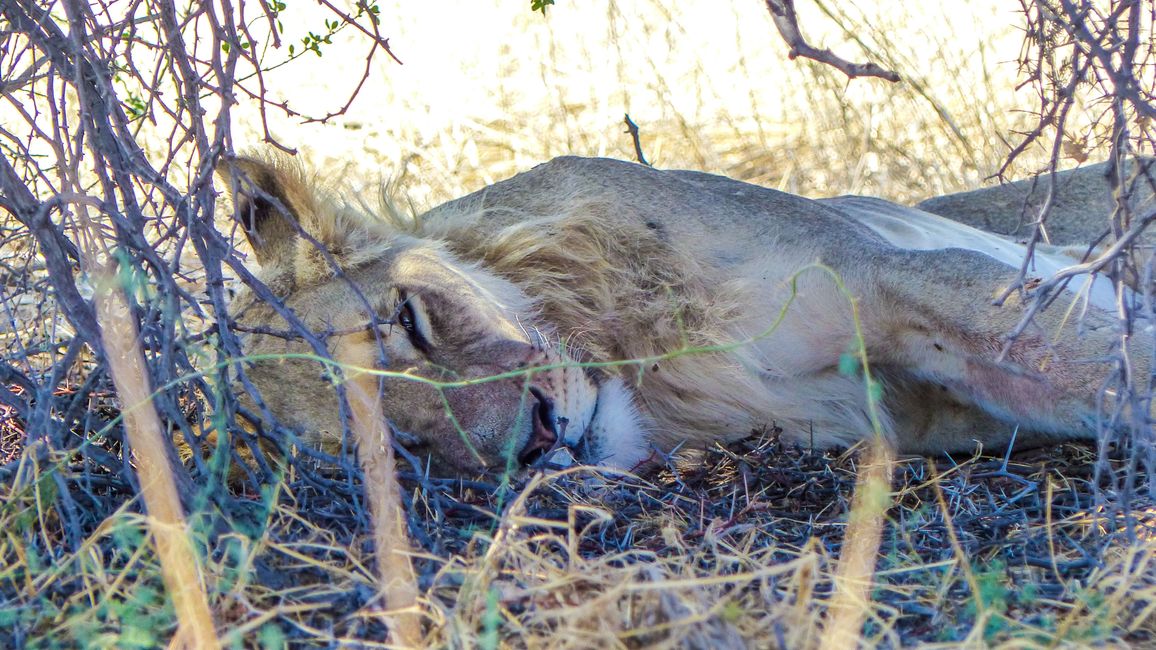
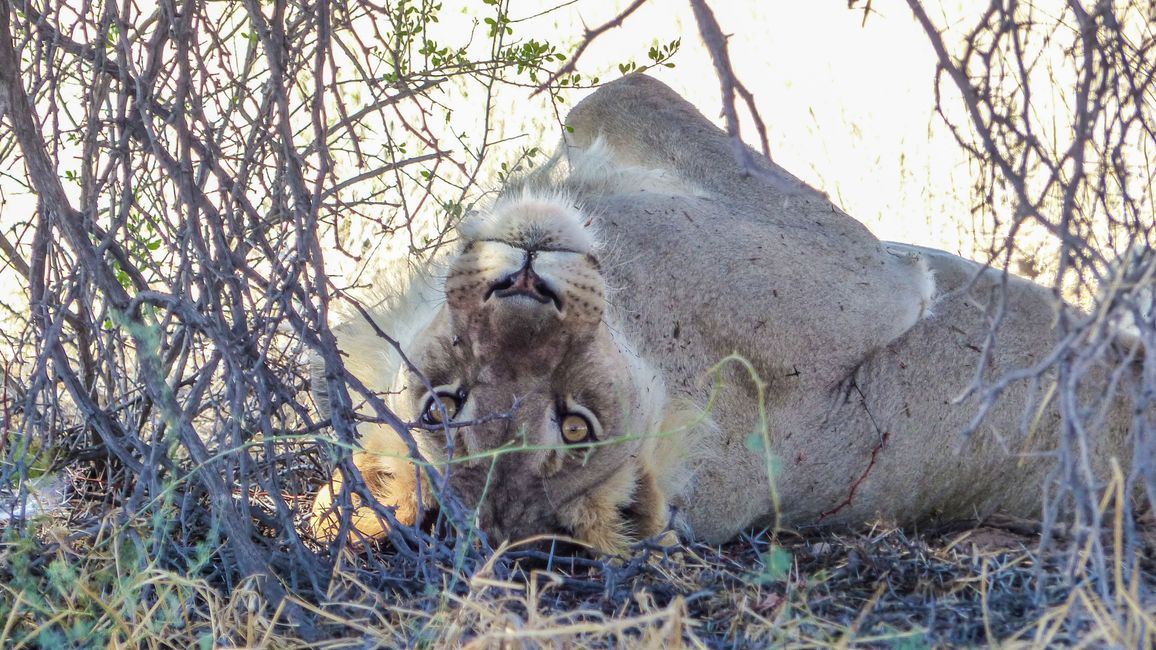
Assine o boletim informativo
Day 23, 19.01.23, from Bagatelle to Mata Mata
A last morning, a last family photo, and a goodbye that is actually a bit hard for us. Of course, we are looking forward to the further stops and experiences of our journey, but we will also miss Bagatelle, we have become so accustomed to our stay here.
While Cindy rides ahead with the bike, Nico does a final check on the Ranger and I take care of the paperwork. A little later, I continue the journey and have the feeling that the Ford Ranger is also a little happy to be moving again.
At the gas station in Stampriet, I pick up Cindy and we head towards Mata Mata on the C15, the border crossing into the Kgalagadi Transfrontier National Park. Just before that, we make a stop at the Kalahari Farmstall, a small cafe, for a cappuccino.
And then we go back to South Africa ... well, not really, because although we are leaving Namibia, we are not yet entering South Africa again. There is no immigration on the South African side of the border, so our passports are not officially checked. Only one police officer diligently records the car details. The actual entry is then at the other end of the park in Twee Revieren.
Another interesting detail at this border crossing, which is only open from 7:30 am to 4:30 pm: You are only allowed to enter and transit if you have booked at least two overnight stays. We don't have these bookings, of course, because we are a week later than planned. However, you can easily leave the car on the Namibian side and walk to South Africa to book the overnight stays in the office, which we do immediately.
We decide on two nights at the Kalahari Tented Camp within the park and another night in a chalet in Twee Rivieren. With these reservations in hand, we return to Namibia, get our departure stamps in our passports and then drive to the South African side. The friendly police officer personally opens the barrier for us and we enter the Kgalagadi Transfrontier National Park.
The national park is located in a large, sandy basin in the western part of the southern African subcontinent. By merging the Kalahari Gemsbok National Park/South Africa and the Gemsbok National Park/Botswana, a cross-border nature reserve was created in the Kalahari Desert with an area of around 38,000 square kilometers. It is one of the few of this size in the world.
The dry landscapes, with sparse vegetation and camel thorn trees, together with red dunes and blue sky, are ideal for observing wildlife and going on photo safaris for various African wild animals. And that's exactly why we are here.
After a few purchases in a small shop, we drive to our camp and set up the tent, then we head straight to our afternoon game drive.
A few springboks and oryx are immediately visible, and after a few kilometers, there she is, lazily lying under a tree: a lioness with her prey, which she has not yet touched. There is no lion pride to be seen, but she is not alone: at a safe distance, three cheetahs are lying and waiting, hoping she may leave some leftovers. We watch the scenario with anticipation. But anyone who has been on a safari knows it can take hours. And since the lioness doesn't really show any signs of having dinner soon, but prefers to turn around, we continue driving.
Beautiful giraffes cross our path and walk elegantly from tree to tree, an impressive sight. A little later, at a waterhole, we see a herd of springboks that is soon joined by a herd of wildebeests approaching. There is no real squabble, but the number of animals around the waterhole does make it a bit cozy, as it is not very large. We stay here for a while, as the slowly setting sun provides a beautiful picture. After a few jackals, which also join the scene, we head back to the camp. On the way back, the cheetahs cross our gravel road. Apparently, they found waiting too boring and decided to go elsewhere in search of food.
Back at the camp, we immediately set about lighting the fire for the braai, watching a sunset, and as it slowly gets dark: a few cheetahs make themselves loud as they make their way to a waterhole, which we can see from our veranda. From the neighboring tents, we see beams of light shining on them. And even though they can only be vaguely seen, you can hear them loudly as they constantly make sounds.
And then a jackal also visits us, hoping that there will be some leftover meat from the braai. A day in nature couldn't end any nicer.
Assine o boletim informativo
Responder
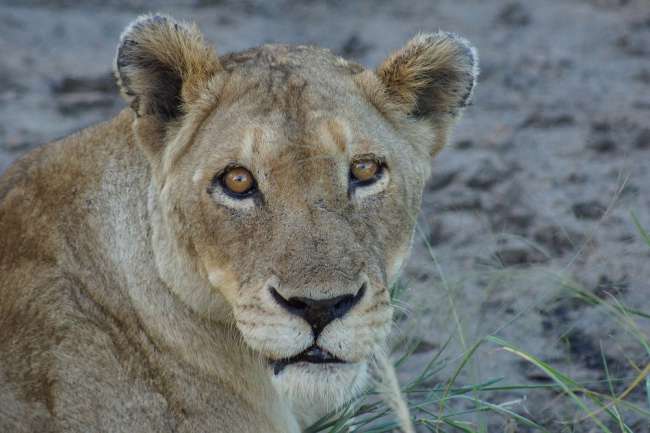
Relatórios de viagem África do Sul

